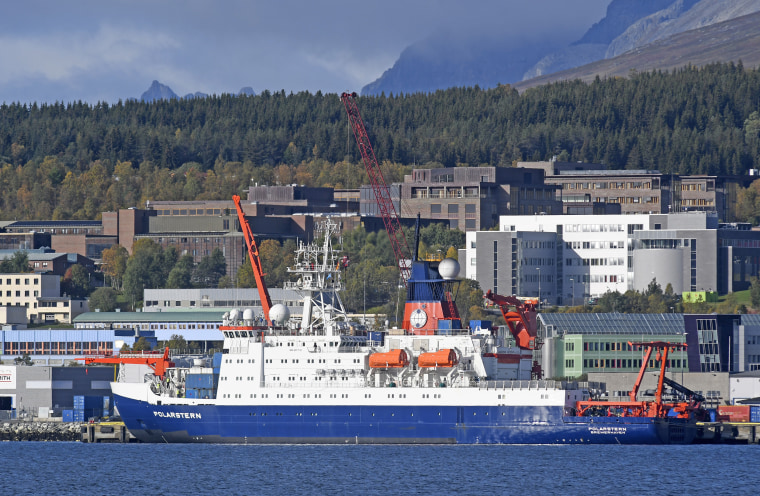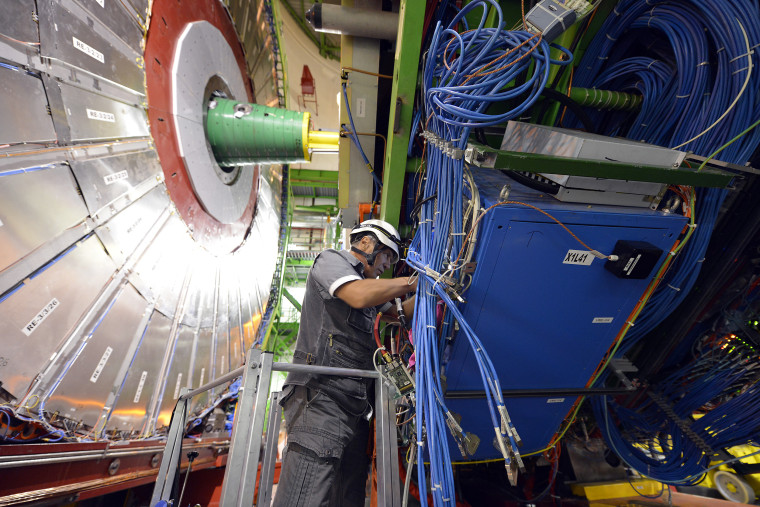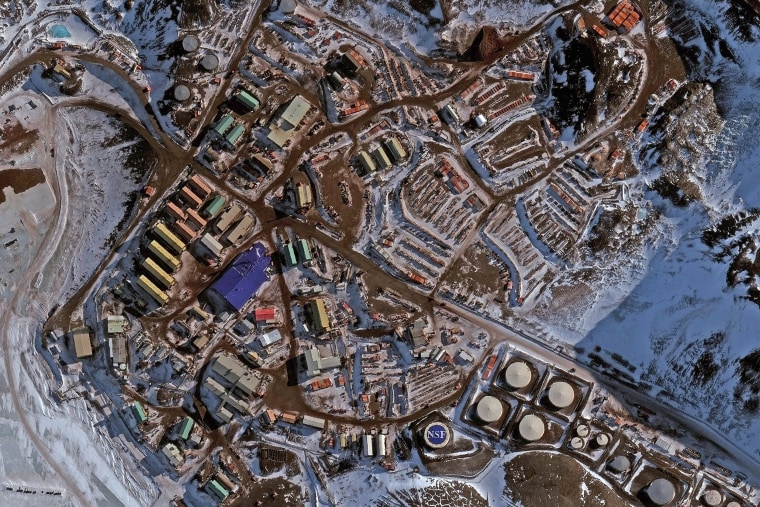Winter is coming to Antarctica. The sun rises for only a few hours each day at McMurdo Station, and the last support aircraft are heading home, leaving the base to a small "winter-over" crew. It's some of the most extreme work a scientist can do.
And this year there's a new concern — keeping the Antarctic free from the coronavirus.
Antarctica is the only continent without any sign of COVID-19. An outbreak could be catastrophic, and stringent measures are being used to keep the virus out, including quarantines and cuts in winter staff. Even social gatherings at some polar bases — almost a necessity in the world's most remote region — have been stopped.
Many of the restrictions will stay in place when the southern winter ends and summer begins near the end of the year — and that could mean some research programs will be pushed back for another year or canceled if they can't be automated.
"There will … be implications for the next austral summer field season," said Stephanie Short, who heads Antarctic logistics for the National Science Foundation. "The exact extent of that impact is yet to be determined."
The coronavirus outbreak has disrupted almost every aspect of human life, and science is no exception. Most experts anticipate that coronavirus precautions could be necessary for many months, and many scientists also expect that their work could be disrupted.
For some, that will have serious implications.

The National Science Foundation runs the largest Antarctic program, with about 1,200 people in the summer at McMurdo Station and two other major Antarctic bases, and about 250 over the winter, at a cost of hundreds of millions of dollars a year. And the United States is only one of dozens of countries conducting research on the ice, which becomes a home for up to 5,000 scientists and staff members every summer.
The vast frozen continent is vital to science because of its almost pristine conditions. But in the age of the coronavirus, no one is sure how much scientific research can continue in Antarctica, and at what cost.
At the world's other extreme, near the North Pole, the German research icebreaker Polarstern is drifting surrounded by pack ice, with an international team of scientists onboard studying the Arctic's sea, ice and climate for an entire year.
They've already avoided one outbreak of COVID-19 by detecting an infected researcher in Germany, before his team traveled to the ship. But that led to the cancellation of an entire airborne experimental survey, and three resupply flights have also been scrapped.
No one knows just how long the preventive measures should stay in place, said geographer Michael Bravo of the Scott Polar Research Institute at Cambridge University in England.
"A precautionary approach means rethinking travel and logistics, even at the cost of reduced research taking place," Bravo said. "'How long' questions are very difficult to answer at the moment anywhere in the world, and the same goes for insulating the polar regions from viruses."
Many scientific fields have been affected by the coronavirus shutdown. Conferences have been canceled, and some major research programs have been scrapped.
The CERN facility on the border of France and Switzerland, for example, which runs the Large Hadron Collider — the world's most expensive science experiment — has closed its laboratories.

But particle physicist Tim Andeen of the University of Texas at Austin, who works on collider experiments, said some work is still getting done — especially the backlog of work on analysis and publications from earlier experimental data.
"We've been trained to work remotely for years," Andeen said. "The timelines will look different, but the science is moving forward."
The shutdown situation is more serious for scientists who rely on access to wildlife.
"Nature won't wait for studies to start up again, and nature can't be repeated," said ecologist Ben Halpern, the director of the National Center for Ecological Analysis and Synthesis at the University of California, Santa Barbara. "There's an unrecoverable gap that is being formed right now, and it is truly global and may end up being quite long."
Some useful knowledge, however, could be gained from studying the ecological effects of the shutdown itself, he said: "We're in the middle of a global and profound change in how humanity impacts the planet, something that has never happened before."
Climate science, too, has been affected, said Lars Peter Riishojgaard, who heads the Earth System Branch of the World Meteorological Organization.
He warned that the shutdown is affecting the global climate forecast models prepared by the agency, which use atmospheric observations from commercial aircraft and data from ocean buoys collected by research ships.
Because many aircraft aren't flying and the research ships are in port, information is being lost, especially from over Africa, parts of South America and the oceans, where there are few alternative systems. "You can really see the hit to the data availability," he said.
Monitoring the oceans is crucial to improving the understanding of climate change, but the instruments need regular maintenance and replacement, which have been stalled.
"It may take us years to recover the ocean observation system completely," he said. "It limits our ability to understand the climate systems."
However, the challenges are also highlighting the strengths of forecasts that use a breadth of observational tools.
"The importance of having resilience in this system is being brought home big time," Riishojgaard said. "It's not doom and gloom yet — the forecasts are still running."

